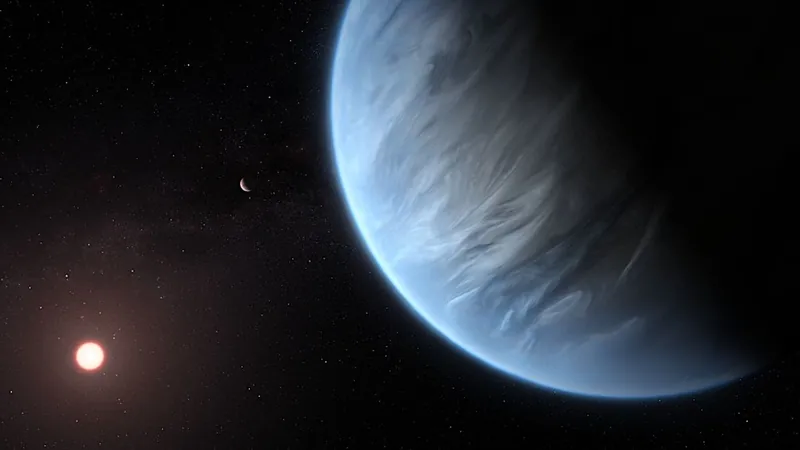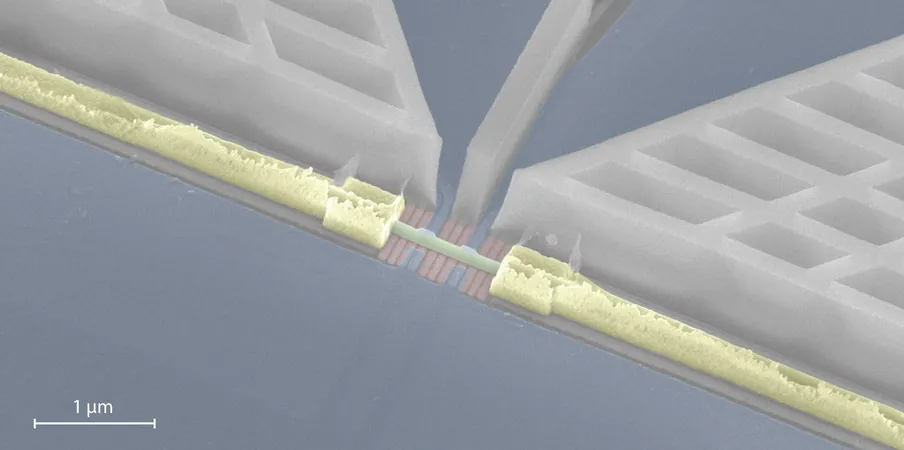
Discovering the Surprising Mixtures of Hydrogen and Water in New Exoplanets!
2025-03-28
Author: Jia
Discovering the Surprising Mixtures of Hydrogen and Water in New Exoplanets!
Recent research has revealed fascinating insights into the atmospheres of planets throughout our galaxy—especially those ranging from the size of Earth to that of Neptune. Scientists have observed that these planets often develop a hydrogen-dominated atmosphere. This environment allows for critical interactions between hydrogen and the molten core of the planet, processes that may last millions to billions of years. Understanding these interactions is key to unraveling the mystery behind the formation and evolution of these celestial bodies, as well as what lies beneath their tumultuous atmospheres.
Given the extreme pressures and temperatures involved within these planetary interiors, traditional laboratory experiments are almost unfeasible. To circumvent this challenge, researchers have harnessed the power of advanced supercomputers at UCLA and Princeton University, employing quantum mechanical molecular dynamics simulations. These simulations provide valuable insights into how hydrogen and water—the two fundamental building blocks of these atmospheres—interact under varying conditions of pressure and temperature.
Lars Stixrude, a professor at UCLA specializing in Earth, planetary, and space sciences, remarked, 'In the intricate depths of planetary interiors, we cannot rely on established physics and chemistry. There isn’t a handbook to guide us; our only choice is to predict these behaviors.'
In their groundbreaking simulations, scientists modeled a system with hundreds of atoms of both hydrogen and water, studying their reactions at a quantum level—the results mirrored what would occur in a real experimental setting. Results indicated that planets born in extreme heat or situated close to their host stars develop an atmosphere that features a relatively uniform blend of hydrogen and water. Over time, as these planets cool, the hydrogen and water begin to differentiate. This separation might generate an unexpected volume of heat deep within the planet, which can drastically alter atmospheric composition and planetary evolution over eons.
During the cooling period, condensation leads to cloud formation in the outer atmosphere as water vapor precipitates; this is a decisive moment. As water and hydrogen begin to segregate deeper down, a “rainout” phenomenon occurs where the heavier water descends, and the lighter hydrogen ascends. This results in a distinct layering of the planet’s atmosphere, creating a hydrogen-rich upper envelope and a water-rich interior.
Interestingly, this research might also shed light on the temperature discrepancies observed between similar-sized planets, such as Uranus and Neptune. 'We believe the rainout of water might have progressed further in Neptune, causing it to maintain more internal heat than Uranus,' explained Akash Gupta, the lead researcher and now a postdoctoral fellow at Princeton.
These findings hold tremendous implications for exoplanets located outside our solar system, such as K2-18 b and TOI-270 d, both of which feature hydrogen atmospheres that potentially overlay oceans of liquid water. However, if these exoplanets have sufficiently high internal temperatures, they may exist in a state where hydrogen and water can't differentiate at all, resulting in a uniform hydrogen-water fluid throughout the planet.
Hilke Schlichting, co-author of the study, warned that if hydrogen and water remain mixed in a planet’s core, it could mean larger discrepancies between how we model the structural and thermal histories of Earth-like and Neptune-like exoplanets. Conversely, cooler planets might maintain a distinct water layer, potentially in a liquid state.
In conclusion, this groundbreaking research not only illuminates the chemical processes at play within planetary atmospheres but also potentially narrows down the hunt for water-rich exoplanets in our galaxy. As scientists continue to probe the cosmos, they may find clues that redefine our understanding of habitability across a multitude of worlds.
This study, funded by NASA, the National Science Foundation, and other esteemed organizations, opens exciting pathways in the exploration and understanding of planetary systems. Embrace the mystery—who knows what other secrets lie in the universe waiting to be uncovered!



 Brasil (PT)
Brasil (PT)
 Canada (EN)
Canada (EN)
 Chile (ES)
Chile (ES)
 Česko (CS)
Česko (CS)
 대한민국 (KO)
대한민국 (KO)
 España (ES)
España (ES)
 France (FR)
France (FR)
 Hong Kong (EN)
Hong Kong (EN)
 Italia (IT)
Italia (IT)
 日本 (JA)
日本 (JA)
 Magyarország (HU)
Magyarország (HU)
 Norge (NO)
Norge (NO)
 Polska (PL)
Polska (PL)
 Schweiz (DE)
Schweiz (DE)
 Singapore (EN)
Singapore (EN)
 Sverige (SV)
Sverige (SV)
 Suomi (FI)
Suomi (FI)
 Türkiye (TR)
Türkiye (TR)
 الإمارات العربية المتحدة (AR)
الإمارات العربية المتحدة (AR)